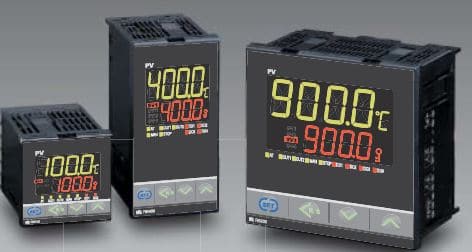1300 737 976
Call us
Live Chat
Call us
Why do we need temperature controllers?
Temperature controllers are used in any process requiring a set temperature to be maintained stable. The processes where an object is required to be heated, cooled or both and to remain at the target temperature, which is also known as the set-point, regardless of the changing environment around it. The fundamental types of temperature control are open loop and closed loop.
The example of a temperature controller is a common thermostat found in a hot water system, which uses a thermostat to control the temperature of the water and maintains it at a certain commanded temperature.

A temperature controller is effectively a cost saving device as the instrument precisely controls temperatures without staff engagements. It shows temperature readings by comparing the actual temperature to the set temperature, which then provides the output to a control element.
What is a PID Control?
Proportional – Integral – Derivative (PID) controllers are Pyrosales’ most popular temperature instrument type. These controllers are control loop instruments – they automatically apply accurate and responsive correction to a control function.
PID controllers work by being capable of continually calculating ‘error values’ between a desired set point and the actual temperature of a measured process variable. It then applies the correction based on the P, I and D values, respectively.
Auto tune: This is a function which is primarily designed to be available for PID controllers. This function automatically works out the best P, I and D values to suit your process by testing how long your control elements need to turn on and off.
An example of auto tuning a PID controller:
Setting an oven to 100°C. The heating elements will turn on and take the oven from ambient temperature through to the set point. The auto tune function can assess how quickly the heating elements reach the set temperature – therefore being able to time how long they need to remain running, and when they should turn off. Auto tune aims to reach the set point as quick as possible without overshooting the desired temperature.
What is a On – Off Controller?
The on/off function controllers are the easiest and most effortless to utilise in the Pyrosales range.
An on/off controller works by turning the control elements off when the temperature has reached PAST the set point value. As the temperature drops below the set point, the control elements will turn back on – turning off once it passes the set point. This process is continually cycling the temperature of the process.
Depending upon the desired set point and control process, the cycling of temperature and elements could happen at a faster rate, resulting in damaged elements or valves. If controlling temperature does not need to be precise, or machinery may get damaged by switching on and off too frequently – there is a function referred to as ‘hysteresis’ or commonly known as on-off differential. This function prevents the output from rapidly cycling through the temperatures and is available on all our instruments.
An example of Hysteresis function:
Having an oven set point at 100°C. The elements will turn on and off as soon as the temperature is reached, continually cycling at a rapid pace. Hysteresis allows the user to provide a wider range of temperatures in which the control elements will switch on and off. Rather than keeping the set point at 100°C, a range is provided to slow down the cycle – such as having elements turn off at 105°C and turn on at 95°C.
Our popular range of controllers
What is a RB controller?
RB Series Controllers: The RB Series combines easy-to-use operation with the latest temperature control advances. With powerful new features such as RKC’s new self-tuning for precise automatic control, digital communications for networking, IP66(IP65) for waterproof/dust proof protection and heater and loop break alarm capabilities to detect system failures, these controllers deliver exceptional process performance for the most demanding industrial applications. They are general purpose, single loop process controllers – 1 sensor input and 1 output. The range varies in DIN sizes/physical sizes, depending on your panel space – but they all provide the same functions. RB series also has a smaller depth than the popular CB series which is an advantage if space is an issue.
What is a Multi-loop Controller?
Multi-loop Controllers: For applications which need extra inputs and outputs, Pyrosales provide the MA900 and MA901 controllers. The MA900 can handle 4 channel input and output, whereas the MA901 handles 8 channel input and output.
What is a Ramp/Soak Controller?
Ramp/Soak Controllers: These programming controllers provide a ‘ramp/soak’ function. A RAMP action occurs when the controller increases the temperature from ambient temperature to a set point. It remains at the set point for a desired amount of time (referred to as SOAK) – and then will ramp up to a new per-selected temperature. This RAMP/SOAK process repeats according to how it has been programmed.
RKC temperature controllers are suitable for a vast range of applications eg:
Pyrosales staff are ready to help you with any inquiry you may have. Our experienced sales engineers will assist you in choosing the correct controller for your application. Some consideration should be taken on the following when selecting an appropriate controller:
Information to consider when choosing your controller.
CONTACT US FOR MORE INFORMATION OR QUOTE
Copyright © 2022 Created by Pepper Digital
Disclaimer – Images for illustrative purposes only and may not be representative of the actual resolution of the camera shown.